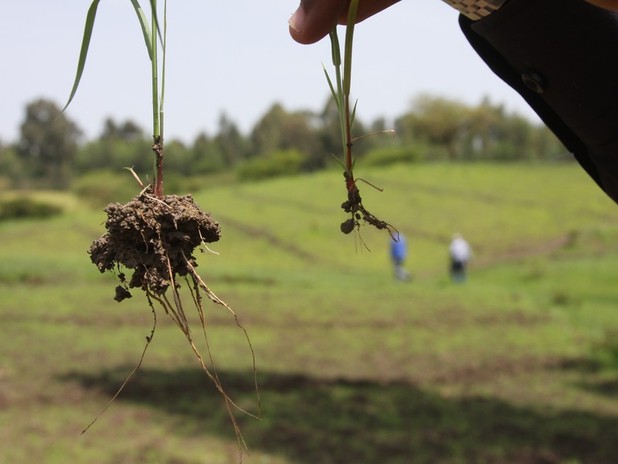December 12, 2013
The IDEO.org team designing a teff row planter in Ethiopia speaks with some experts from our partner, the Ethiopian Agricultural Transformation Agency (ATA), and learns valuable information about preferable teff planting techniques.
Yesterday we had the opportunity to talk to two outstanding experts, both employed by the Ethiopian Agricultural Transformation Agency (ATA). Dr. Marco Quinones is the Senior Director for Value Chains and Implementation, and has devoted the last thirty-one years of his life to helping African smallholder farmers attain food security. Dr. Tareke Berhe is the Director for teff and rice value chains (colleagues refer to him at Dr. Teff!). He is responsible for supporting the increase of teff production and to ensure that farmers have sufficient access to markets.
Both gentlemen have deep knowledge and passion for teff cultivation and have been incredible source of information during our research. This blog post is inspired by the joy that connects them to their work...
Dr. Marco explained that teff was domesticated in Ethiopia some 5000 years ago. Since that time teff cultivation has never changed. Unfortunately, it's practiced in a less than ideal way!
Traditionally, teff is broadcasted (seeded on top of the soil) because farmers believe such a small seed would be too weak to grow from underground. Today we know teff easily germinates from 5 cm depth. By doing so it develops much more roots and becomes a stronger plant. The image above compares the root systems of a seed that germinated on the surface and the root system of a plant that germinated underground. Isn't it incredible how seeds of the same kind can become such different plants due solely to their planting methods?!
Secondly cereals (including teff) have great elasticity. This means that the plant size will react to the amount of space, sunlight, and nutrients it has available. In other words, planting fewer seeds will produce healthier and larger plants with higher yield.
The combination of planting underground and reducing the seed rate are the best premises for happy teff. In Dr. Tareke's words, "the first 20 days of growing [teff] is like childhood development."
Research has shown yield can be improved from 1.2 tons per acre (with traditional planting methods) to 7 tons with the right practices! Now our challenge is to develop a planter that fulfills these requirements, is easy to use, and is affordable enough for farmers to adopt - no pressure.





